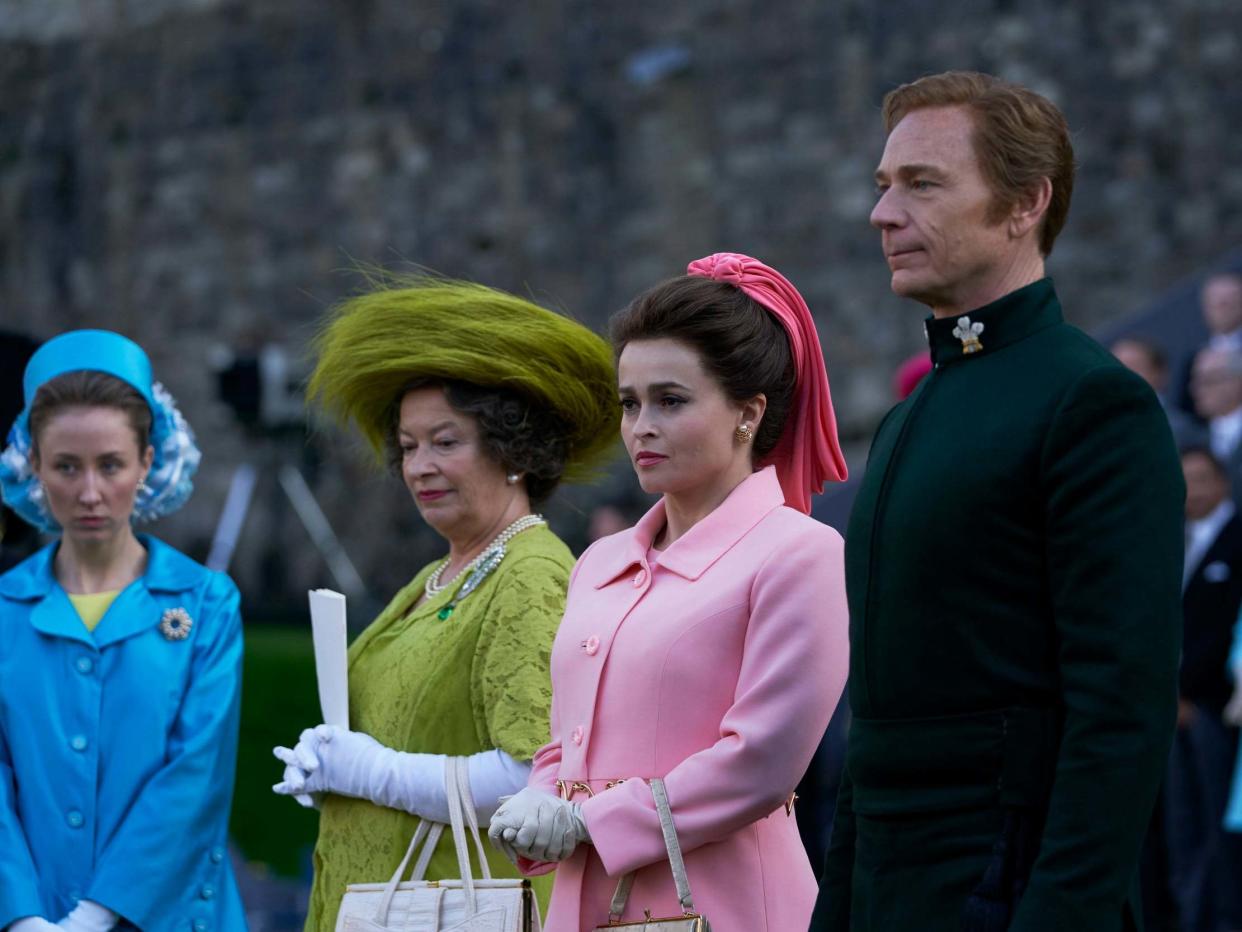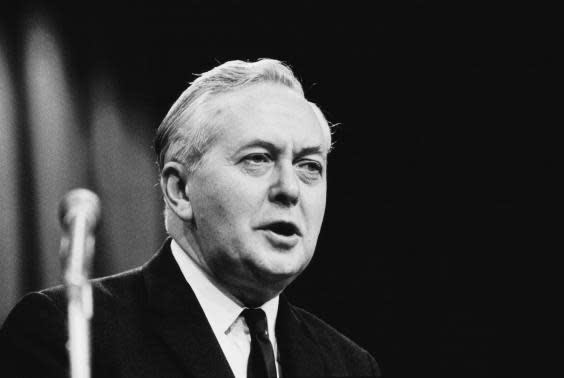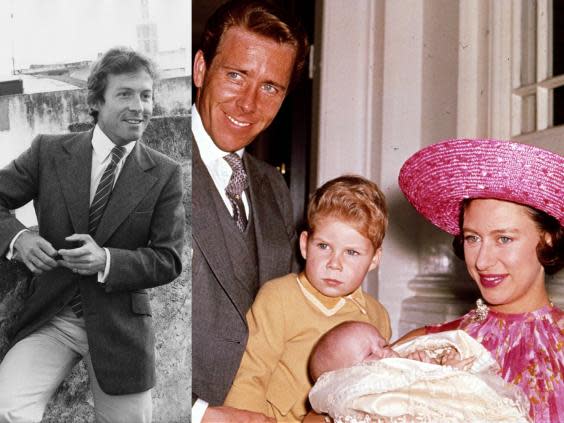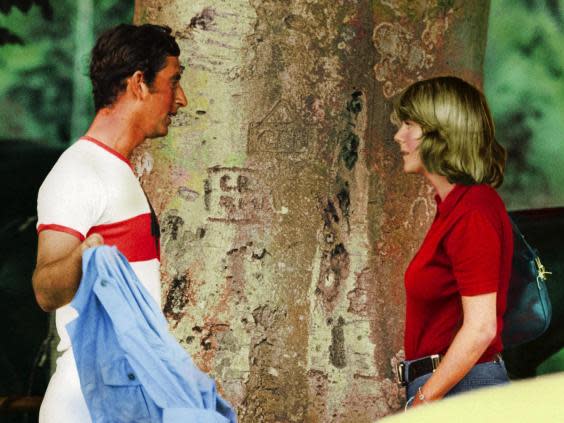The Crown: The real life events surrounding the third season of the Netflix period drama

Netflix‘s The Crown is leading the way at this year's TV Bafta Awards, with nominations for best drama series, supporting actress and actor for Helena Bonham Carter as Princess Margaret and Josh O'Connor as a young Prince of Wales.
The third season also starred Oscar-winner Olivia Colman as Queen Elizabeth II, succeeding Golden Globe-winner Claire Foy, who portrayed the monarch from 1947 to 1964, however she did not recieve a nomination.
The latest series followed the monarch as she and other members of the royal family navigated various historic events, including the death of Sir Winston Churchill and the Apollo 11 moon landing, before coming to a close in 1977, the year that Prince Charles first made the acquaintance of Lady Diana Spencer.
Here are the real-life events depicted in the new season of The Crown:
The election of Harold Wilson as prime minister

Labour politician Harold Wilson served as prime minister for two terms, the first from 1964 to 1970 and the second from 1974 to 1976.
In 1947, a 31-year-old Wilson was made Britain’s youngest cabinet minister in 165 years.
Bafta-winning actor Jason Watkins, who plays the former prime minister in The Crown, said he “watched lots of YouTube and lots of documentaries” about his character in order to portray him as accurately as possible.
As prime minister, Wilson oversaw the implementation of the Murder (Abolition of Death Penalty) Act of 1965, which abolished the death penalty for murder in Great Britain, and the Sexual Offences Act of 1967, which decriminalised homosexual acts in private between two men over the age of 21.
Colman recently stated her belief that the Queen is “a leftie”, partly due the monarch’s friendship with Wilson.
The unveiling of art adviser Anthony Blunt as a Soviet spy

Anthony Blunt, a British art historian, was appointed surveyor of the king’s pictures in 1945 by King George VI, later becoming surveyor of the queen’s pictures under Queen Elizabeth II’s reign.
In 1956, Blunt received royal recognition for his esteemed work, being knighted as a Knight Commander of the Victorian Order.
Despite his public profile as an art historian within the Queen’s inner circle, behind the scenes Blunt was acting as a Soviet spy, a fact that did not come to light until his secret confession to MI5 in 1964.
Following his confession, the British government stated that it would keep Blunt’s espionage activities a secret for 15 years and he was granted immunity from prosecution.
His work as a spy was made public in 1979 during a speech delivered by Prime Minister Margaret Thatcher in the House of Commons.
The Aberfan disaster

At 9.15am on 21 October 1966, catastrophe struck the village of Aberfan in South Wales when a colliery spoil tip collapsed following heavy rainfall.
The collapse of the tip caused a landslide, destroying a school and other buildings and resulting in the deaths of 144 people, 116 of which were children.
It took a week for all the bodies of the deceased to be recovered from the wreckage.
On 29 October 1966, the Queen and the Duke of Edinburgh visited the village to pay their respects to those who perished.
The Apollo 11 moon landing

This year marks half a century since Neil Armstrong and Buzz Aldrin planted their feet on the moon’s surface during the Apollo 11 mission, a historic event that took place during the space race between Cold War rivals the US and the Soviet Union.
Prior to the mission, the Queen wrote a message to be left on the moon that read: “On behalf of the British people I salute the skills and courage which have brought man to the moon. May this endeavour increase the knowledge and well-being of mankind.”
After the space outing, Armstrong, Aldrin and command module pilot Michael Collins met the monarch at Buckingham Palace.
Actor Tobias Menzies, who portrays Prince Philip in season three of The Crown, recently told Radio Times how the drama would depict the duke as being “very absorbed by the heroism of these men compared to what maybe he hasn’t done with his own life”.
The investiture of the Prince of Wales

In 1969, at the age of 20, Prince Charles partook in his formal investiture as the Prince of Wales.
The royal previously received the titles of the Prince of Wales and the Earth of Chester when he was nine years old.
The investiture ceremony, which took place on 1 July 1969 at Caernarfon Castle in north-west Wales, was televised and attended by 4,000 people.
Prince Charles was invested by his mother, the Queen, who bestowed upon him five pieces of insignia: a sword, a coronet, a ring, a gold rod and a mantle.
During the proceedings, Prince Wales uttered the oath: ”I, Charles, Prince of Wales, do become your liege man of life and limb and of earthly worship and faith and truth I will bear unto thee to live and die against all manner of folks.”
The decolonisation of countries in Africa and the Caribbean from the British Empire

The third season of The Crown depicts the decolonisation of some countries in Africa and the Caribbean from the British Empire.
The events shown in the television show were preceded by the Mau Mau Rebellion, which occurred in Kenya in 1952 in protest of British colonists, Historic UK outlines.
Four years later, the Northeastern African country of Sudan gained independence from the British Empire, followed by Ghana in 1957.
Countries under British colonial rule in Africa continued to declare independence up until 1966, except Namibia, which achieved independence in 1990.
In the Caribbean, Jamaica and Trinidad and Tobago gained independence from the British Empire in 1962, with Barbados attaining independence in 1966 and the rest of the eastern Caribbean islands following suit in the 1970s and the 1980s.
The death of Sir Winston Churchill

In 1965, Sir Winston Churchill passed away at the age of 90, with a state funeral being held for the wartime prime minister.
Following his death, Churchill’s body lay in state for three days in Westminster Hall, before his funeral was held at St Paul’s Cathedral.
A funeral procession was held for the politician, which consisted of around 2,500 soldiers and members of the public.
While it is customary for the Queen not to attend funerals, she did so on the occasion of Churchill’s death.
Princess Margaret’s relationship with Roddy Llewellyn and divorce from Antony Armstrong-Jones

Having previously documented Princess Margaret’s relationships with Peter Townsend and Antony Armstrong-Jones, the third season of The Crown brings a third suitor into the fold – Roddy LLewellyn, a baronet and gardener with whom she had an eight-year relationship.
Princess Margaret and Llewellyn first met in 1973, when they were introduced in Scotland, according to the BBC.
A photograph of the pair holidaying on the island of Mustique in the Caribbean sparked controversy when it was published by a tabloid in 1976.
Not only was the royal still married to Antony Armstrong-Jones at the time, but there was also a 17-year age difference between her and the younger Llewellyn.
Princess Margaret’s divorce from Armstrong-Jones in 1978 marked the first time a member of the royal family had been divorced since Henry VIII and Catherine of Aragon in the 16th century.
Prince Charles’ first encounter with Camilla Shand

The new season of The Crown documents the introduction of a significant woman in Prince Charles’ life – his second wife, Camilla Parker Bowles, played by Emerald Fennell.
Prince Charles first met Camilla – then Camilla Shand – at a polo match in 1970.
While the pair became romantically involved, when Charles departed to the Caribbean to serve with the Royal Navy for eight months, Camilla became engaged to Andrew Parker Bowles.
She and Prince Charles remained close friends, with the royal even being named the godfather of her son, Tom, who was born in December 1974.
The fourth season of the show, which is currently in production, will depict Prince Charles' meeting and marrying the late Lady Diana Spencer and the way in which his relationship with Camilla affected their union.
To take a look at all of the most exquisite costumes showcased on The Crown, click here.


